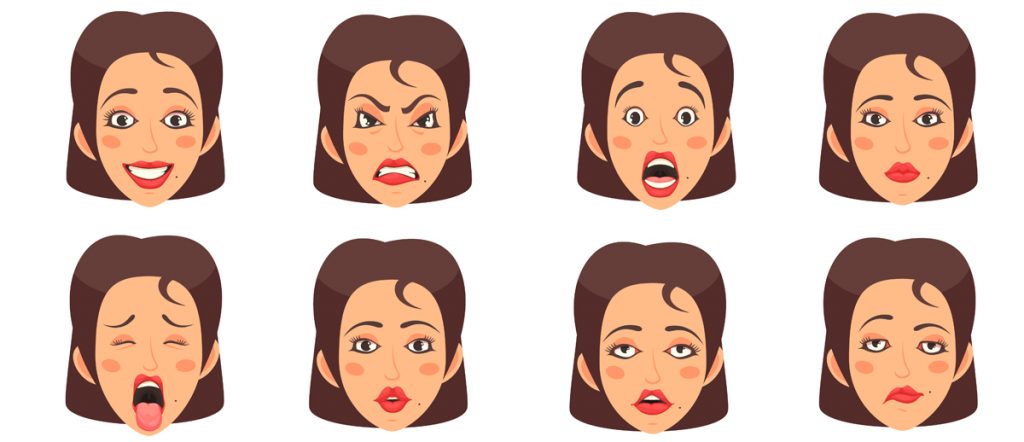Positive Body Language I Should Know
1/11
Positive body language or body language you should know is a great science and if it’s something that will help you to understand, the other person by the actions of that person. How that person is behaving we come to know only through nonverbal body language. Positive body language is the unspoken form of communication that we use in each and every one of our interactions with people it tells exactly what the other person is thinking by analyzing the movement of his or her hands the way he or she talks and everything else.
Well, it is such a beautiful study because you can actually come to know a lot about the other person just by observing them. How do you use body language for your own advantage or disadvantage we will talk about the dos and Don’ts of body language as well as we will give you certain examples tips and tricks, in order to make your body language better.
Type of Body Language I Should Know
2/11
There are different types of body languages it’s not about how you look or dress it is also about everything that we do not show a body posture the hand movements are just like yours and Eye contact show exactly what you are not saying it can be or not be in accordance with your actions as well as your words. Body language is not just how you look. It is about everything that we do not say. Our body postures, hand movements, eye-contact, all these show exactly what you are not saying. It can be or not in accordance with your actions and words. Well not always will your body language or actions matched the words that you are saying. At times the person who is saying something might have a discrepancy is with the body language the action may not match the words. Hence it is always good to observe the other person what he or she is doing or not doing purely by observing the body language.
Different Types of Body Language I Should Know
3/11
- Facial expressions
- Eye contact
- Gestures
- Postures
- Proxemics
Facial Expressions I should Know
4/11

Facial expressions or face is a mirror to the soul and whatever you feel inside your emotions come through your face through the facial expression this you may feel anger disgust ridge, happiness, and sadness, loneliness, depression all of these different facial expressions can be seen on the face.
- Anger
- Contempt
- Disgusted
- Embarrass
- Fear
- Happy Neutral
- Pride
- Sad
- Surprised
Facial expressions talk about what’s going on in your mind it shows about emotional attitude should be in sync with your words and your actions. If somebody asks you how are you and you are very sad while saying I am fine thank you but your facial expression is not matching to the word that you said that you’re fine well that shows you the other person that you are actually not fine but you’re pretending to be fine but they can come to know by watching your facial expression that you are indeed sad at that point of time.
Eye Contact I Should Know
5/11

Eye contact shows confidence on the speaker’s part. When you make eye contact while speaking, you can understand what the other person is actually saying. It helps you to understand even the unsaid words.
Eye contact really says a lot about the other person if you maintain eye contact of more than 3 seconds with the person it is termed as staring at the other person and it can get people very uncomfortable especially if they are of the opposite gender. Hence it is important to maintain eye contact of 2-3 seconds before that you either blink or look away and looked back at that person then it would not be termed as steering. In a professional setup is important to maintain Eye contact when you’re talking to someone hence or else what happens is that the person feels you are rather a little nervous or anxious and not very confident about what you are saying. Maximum nine out of ten times if you are looking at the person write in the Eye and talking, they would not dare not look away they would definitely keep looking and looking interested in what you are saying and sounding like. Hence Eye contact is a very very important part of body language.
Gestures I Should Know
6/11
Talking about gestures well friends gesture just the way you use your hand if you’re using your hands openly and showing them, it shows your confidence as person if you do not show your hands means either you fist it or you keep it backside of yours it shows that underconfident and you are not a very open person.
Hence body language or gestures is all about showing your hands do not point your hand or finger at someone always use open palm gesture rather than pointing at someone. Well, gestures are forms of nonverbal communication that indicate a particular message in reference to the conversation they include the movement of hands face, and another body language.
Postures: I Should Know
7/11

Postures are all about how you sit how to stand and how you walk. Postures are always related to waist down, so the way you use your legs if you maintaining are bad posture while sitting or if you are tapping your leg on the floor or you’re dragging your feet and walking that’s again and negative postures. To have a nice posture you should stand with your feet you know slightly apart till the shoulder length of yours and also try to have your back straight and your Spine erects that show that you are sitting or standing in a good posture. Well, posture described how the speaker stands and moves around a good posture exhibit strong confidence and command of the speaker.
So, if you are talking in front of say 100 people if you do not make have a good posture it will show the audience that will not somebody who is confident while you are talking to them. Hence always have a good and a strong and positive body posture.
Proxemics: I Should Know
8/11
Proxemics is all about the distance which you need to maintain with the person you are speaking to there are different kind of spaces approximants one is intimate which is a very close zone own space to the person you’re speaking do if you enter into the intimate space of the other person it can make them uncomfortable. Well, this place is reserved only for your near and dear ones some not really something on a professional setup. 2nd is again personal zone which is a little farther away functional zone social zone superficial and anonymous well it at your workplace or a working setup it is important to be in the functional and social zone and not be in the intimate of the personal zone of the person. That again makes the person a little uncomfortable if they are right into your personal space or your intimate space that can make the other person really have a negative body language.
Effective Use of Body Language: It’s very important while you are
9/11

- Maintain eye-contact
- Use hands while talking
- Use the stage effectively.
- Positive body postures
- Be careful with the handshake.
- Graceful movements
Maintaining good eye contact you need to use your hands while talking never keep them close keep them open. Use the stage effectively if you are talking in front of a larger audience. Have a rather always have positive body postures. Be careful with the handshake never give a very firm or a very loose handshake make sure that your hand should be absolutely the right kind of handshake that would make a good impression.
Always have graceful movements well people like talking to those people who always have a positive body like it and hence I would urge you to always be relaxed and confident in your body language.
5 Do’s of Body Language: I Should Know
10/11
- Make proper eye-contact.
- Always keep your arms and hands open.
- Make sure you are actively listening.
- Make your emotions visible on your face.
- Make power posing a habit.
Certain Do’s, of a good body language is always made proper eye contact. Always keep your arms and your hands open make sure your active listening by leaning forward while you are talking to a person. Make your emotions visible on your face make your power posing a habit. Well, these are certainly good things about positive body language.
5 Don’t of Body Language: I Should Know
11/11
- Never fold hand/arms
- Never look lost or disinterested.
- Jiggle legs.
- Fidget with hands.
- Never turn your back to the audience.
DON’Ts certain things that you should not do while you know trying to portray yourself as a positive body language certain rule are :
Do not always fold your arms in front of you. Never keep your arms in your pockets. Never look lost or disinterested through your facial expression. Never giggle or shake the legs do not fidget with the hands because it shows that you’re nervous or anxious. Never ever turn your back to the audience and that’s again a sign of negative body language and not something that I would want you all to ever practice.
Conclusion
- Nonverbal communication holds up to 60-65 percent of all our communications.
- Body language says a lot more about what is going in your mind than your words or actions.
- They have a very prominent role when it comes to the workplace.
- The right tone of voice, the correct body posture, and proper distance while talking indicate a lot about overall personality.
Well, that brings us to the conclusion for the end of this beautiful module on positive body language we would just like to you to leave the saying that action speaks Louder Than words make sure that your actions stand out from the crowd to make sure that your actions or your nonverbal communication are something which will always impress people in a positive way and not in a negative way.
